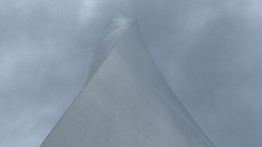Free Lecture: Form Follows Function -- Structure and Architectural Concept
Tuesday, April 16, 2013, 6 - 8pm

Louis Sullivan's aesthetic credo 'form follows function' became foundational to the modernist architectural movement. When it comes to structure, form relates to function and can enrich and even define architectural concepts. The lecture explains the principles of forms and structures and explores approaches where structural form supports and enhances architecture beyond its primary function. Expressive and efficient structures are gaining architectural significance as they become prominent landmarks for local areas. The lecture explores possibilities to efficiently form and place structure and discusses form finding approaches and methods. It teaches how the creative selection of form or structure can provide effective solutions to modern buildings and structures.
Holger Schulze-Ehring, Dipl.-Ing., Cand.-Arch. and Vice President at Simpson Gumpertz & Heger, applies his expertise in advanced engineering and architecture to the design of unique, inventive, and complex structures. Uniting his strong technical and creative background he works with renowned architects and artists on museums and other cultural buildings, transportation hubs and bridges (including the World Trade Center Port Authority Trans-Hudson Transportation Hub), as well as sculptures, lightweight and moveable structures. Applying his training and research in both structural engineering and architecture, he teaches design of long-span structures at the Manhattan College and has been a guest lecturer, critic and juror at numerous universities, including Columbia University, Princeton University and University of Pennsylvania.
This lecture, organized by Civil Engineering Department of the Albert Nerken School of Engineering has been generously funded by the Steel Institute of New York.
Located in The Great Hall, in the Foundation Building, 7 East 7th Street, between Third and Fourth Avenues




